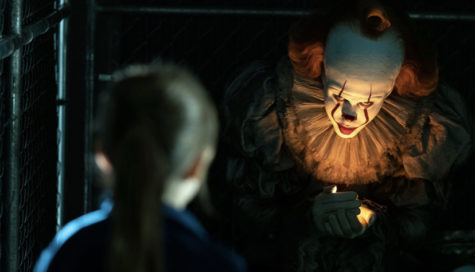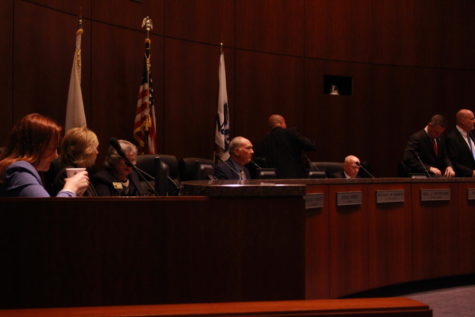Editorial: NNHS must replace artificial light
Naperville North needs to make quality lighting a priority.
Between morning practices, early bus times and meetings with teachers, NNHS students seem to be waking up earlier and earlier– long before the sun. Sunlight is just beginning to tint the sky when students begin traipsing into the building at 7 a.m. on weekday mornings.
On top of that, many students are involved in afterschool activities, meaning that by the time they leave school for the day, the sun has already gone down. The hazy glow of approaching sunrise at 7 a.m. every morning is the extent of their daylight intake for the school week.
Students’ only consistent light source is the artificial indoor light installed in most classrooms.
The school building does not allow for adequate sun exposure, which has been linked to an increased risk of depression, depleted energy and worsened mood. Additionally, limited sunlight can disrupt circadian rhythms, which are 24-hour biological clocks that regulate sleep. This can, in turn, cause insomnia, daytime sleepiness, irritability and poor concentration. Circadian rhythm disruption can also pose more severe risks like obesity, metabolic disorders and premature aging.
To make matters worse, the artificial light supplied in school may do more harm than good. Constant exposure to artificial light can disrupt our biological clocks. A 2016 study found that when continuously exposed to artificial light, for 24 weeks, mice suffered signs of aging such as bone deterioration and reduced skeletal muscle function. The study also found that returning to a natural 24-hour light cycle reversed the mice’s health detriments.
While the daily artificial light exposure experienced at NNHS pales in comparison to the 24 weeks of relentless light undergone by the mice, studies suggest that limiting artificial light intake is important in maintaining circadian rhythms and overall health.
In the face of this, NNHS has made efforts to curb the effects of sunlight deprivation, specifically when modelling the Learning Commons in 2016. According to Learning Commons Director Mark Skarr, staff selected daylight-colored LED lighting (also known as full-spectrum light) and four skylights. The intent was to mimic daylight, increasing alertness and energy.
Further, lighting that emulates a sunny day has been proven to increase productivity.
“It was our intention to make the Learning Commons capable of being a vivid and bright space during the gray winter months… We noticed a marked difference last winter in student pep based on the change over to this bright daylight colored lighting,” Skarr said in an email interview.
Sunlight is essential for health. We recognize that adjusting school hours to allow for more adequate sun exposure is unrealistic. It may be near impossible to get students out in the sun more often, especially at this time of year, but hope is not completely lost.
Just one area with proper lighting is not enough. NNHS staff should look into installing daylight colored light bulbs in all classrooms and cafeterias. Making the switch to better lighting everywhere in the school can mean the difference between a student simply nodding off throughout the day and getting the chance to be as successful as they can be.

Emily Welp is a senior at Naperville North High School and is returning for her second year on The North Star staff and her first year as features editor....

Senior Jayla Butler is excited to tackle her second year on staff as The North Star’s very first Graphics Editor! She is looking forward to enhancing...











